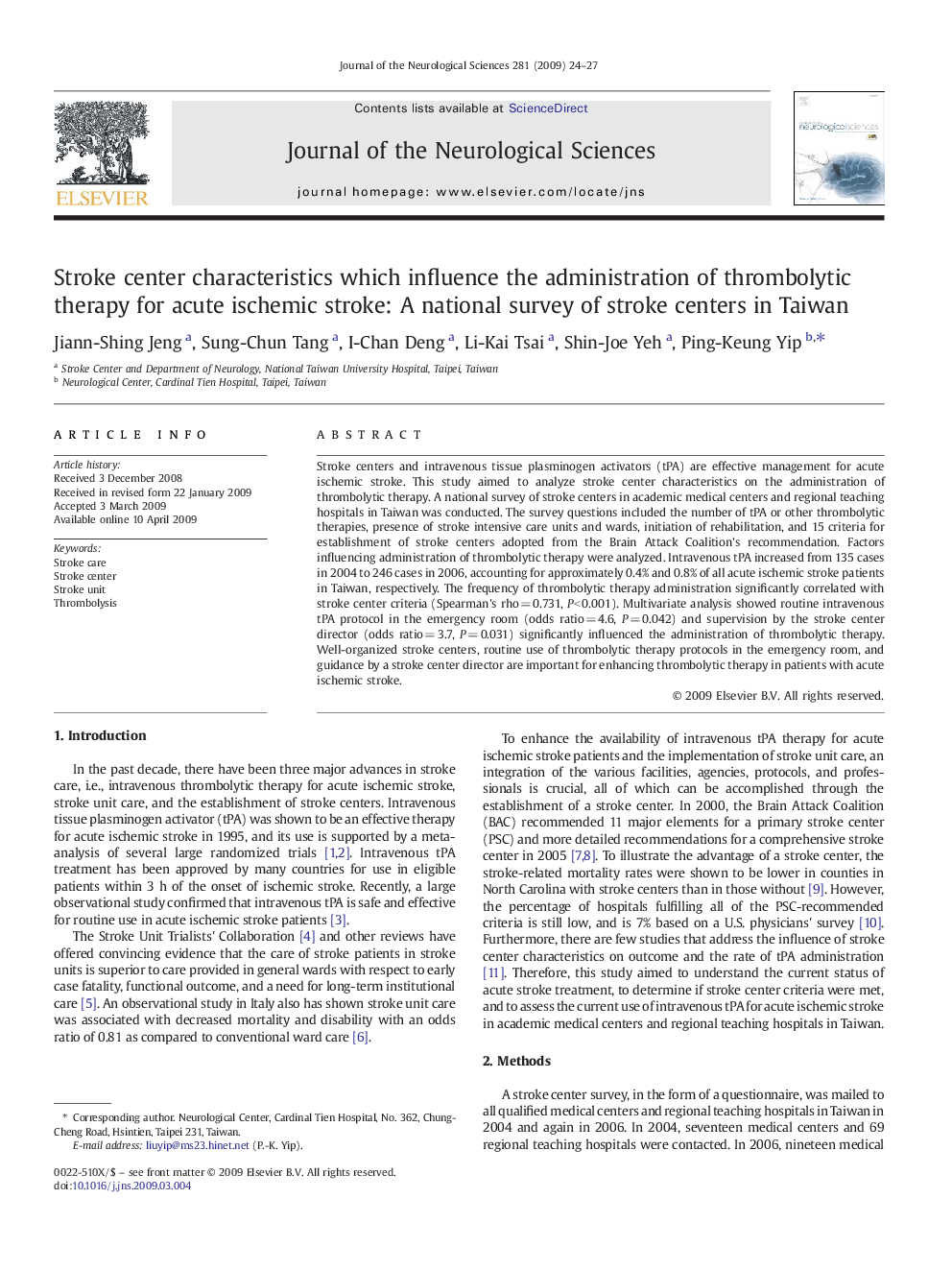| Article ID | Journal | Published Year | Pages | File Type |
|---|---|---|---|---|
| 1915295 | Journal of the Neurological Sciences | 2009 | 4 Pages |
Stroke centers and intravenous tissue plasminogen activators (tPA) are effective management for acute ischemic stroke. This study aimed to analyze stroke center characteristics on the administration of thrombolytic therapy. A national survey of stroke centers in academic medical centers and regional teaching hospitals in Taiwan was conducted. The survey questions included the number of tPA or other thrombolytic therapies, presence of stroke intensive care units and wards, initiation of rehabilitation, and 15 criteria for establishment of stroke centers adopted from the Brain Attack Coalition's recommendation. Factors influencing administration of thrombolytic therapy were analyzed. Intravenous tPA increased from 135 cases in 2004 to 246 cases in 2006, accounting for approximately 0.4% and 0.8% of all acute ischemic stroke patients in Taiwan, respectively. The frequency of thrombolytic therapy administration significantly correlated with stroke center criteria (Spearman's rho = 0.731, P < 0.001). Multivariate analysis showed routine intravenous tPA protocol in the emergency room (odds ratio = 4.6, P = 0.042) and supervision by the stroke center director (odds ratio = 3.7, P = 0.031) significantly influenced the administration of thrombolytic therapy. Well-organized stroke centers, routine use of thrombolytic therapy protocols in the emergency room, and guidance by a stroke center director are important for enhancing thrombolytic therapy in patients with acute ischemic stroke.
